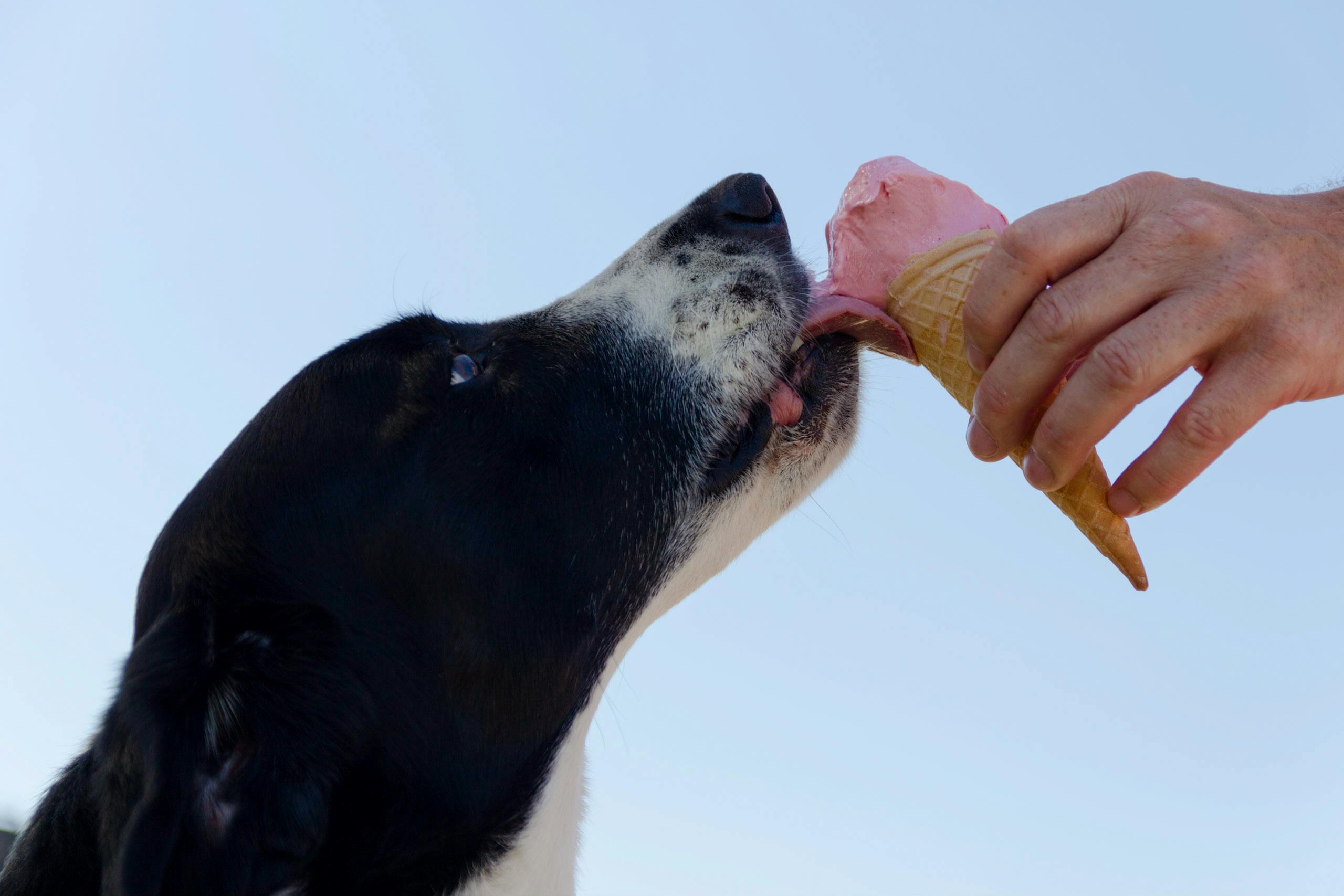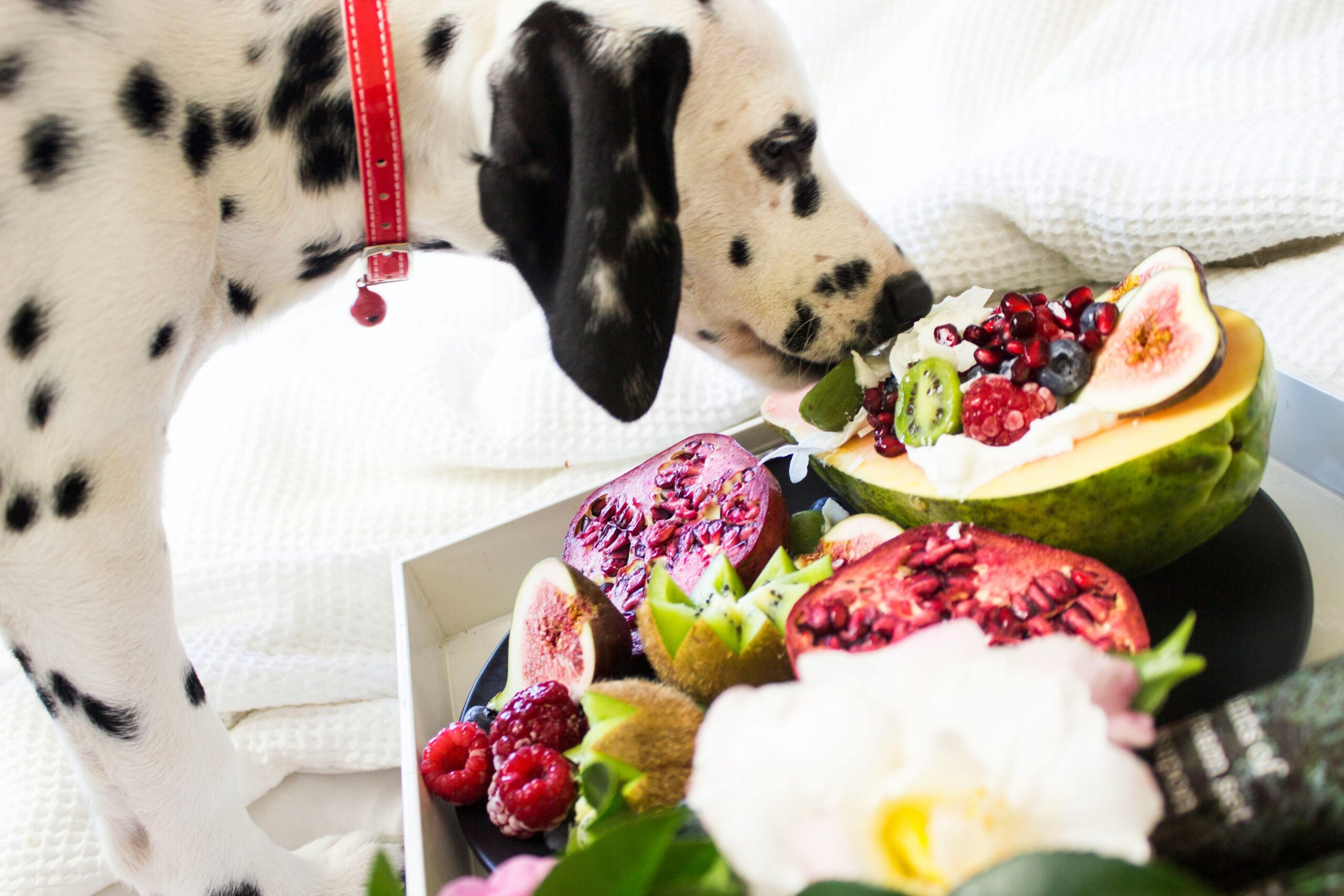Life can get hectic, and it’s easy to overlook that our dogs crave variety and flavor in Homemade Dog Food Seasoning. If you’ve ever watched your pup sniff at the same old kibble day after day and then walk away, you’re not alone. The good news is that there’s a creative, healthy way to bring excitement back to the dog bowl: Homemade Dog Food Seasoning.
This article will explore dog-friendly herbs and spices that can make mealtime more enticing. You’ll learn how these seasonings can benefit your dog’s health, discover tips for safe use, and find out how to store your blends for maximum freshness. Along the way, we’ll share real-life examples, expert insights, and a handy table to help you get started right away.
Why Homemade Dog Food Seasoning?
Dogs possess an incredibly sensitive sense of smell—some estimates say up to 100,000 times more sensitive than ours. While even plain kibble can smell enticing to them, they still appreciate variety and novelty. Adding Homemade Dog Food Seasoning can:

- Enhance Palatability: A pinch of dog-safe herbs or spices can spark your dog’s interest in an otherwise monotonous meal.
- Boost Nutrition: Many herbs and spices are rich in antioxidants, vitamins, and minerals.
- Encourage Picky Eaters: A sprinkle of seasoning might tempt a finicky pup to finally clean their bowl.
- Low-Cost Solution: Seasonings are generally inexpensive and easy to store or prepare at home.
A survey by the American Pet Products Association found that nearly 70% of dog owners are actively seeking ways to make their pets’ meals more appealing. Homemade Dog Food Seasoning offers a simple, budget-friendly approach to achieving this goal.
Important Considerations Before You Start
Before you begin sprinkling herbs and spices into your dog’s bowl, keep these important points in mind:
- Consult Your Veterinarian: Always check with a vet before introducing new ingredients—especially if your dog has allergies, gastrointestinal sensitivities, or chronic health conditions.
- Avoid Toxic Ingredients: Certain seasonings like onion, garlic, and chives can be harmful to dogs; also, beware of high salt content.
- Monitor Reactions: Introduce one new herb or spice at a time and watch for any signs of digestive upset or allergic reactions.
- Use Fresh, High-Quality Ingredients: Old spices lose potency and can develop mold. Opt for fresh or high-quality dried herbs to maximize both flavor and safety.
Dog-Safe Herbs and Their Benefits
Parsley
- Flavor Profile: Mild, fresh taste
- Potential Benefits: Rich in antioxidants and vitamin K; may help freshen your dog’s breath.
- How to Use: Chop fresh parsley and sprinkle a small amount over your dog’s meal.
Basil
- Flavor Profile: Sweet and slightly peppery
- Potential Benefits: Contains antioxidants and has anti-inflammatory properties; some believe it can help reduce stress in dogs.
- How to Use: Finely chop fresh basil leaves or use dried basil in moderation.
Oregano
- Flavor Profile: Earthy, robust
- Potential Benefits: Known for its antibacterial properties and high antioxidant content; may support digestion.
- How to Use: Use fresh or dried oregano leaves sparingly. Avoid concentrated oregano oil.
Rosemary
- Flavor Profile: Strong, pine-like
- Potential Benefits: It may support digestion; natural preservative qualities can help homemade treats stay fresh longer.
- How to Use: Mince fresh rosemary sprigs or use a pinch of dried rosemary.
Thyme
- Flavor Profile: Woody, slightly sweet
- Potential Benefits: Can aid digestion and offers antioxidant benefits.
- How to Use: Both fresh and dried thyme work well; chop leaves to distribute flavor evenly.
Sage
- Flavor Profile: Savory, slightly peppery
- Potential Benefits: Rich in vitamins A, E, and K; can help soothe inflammation.
- How to Use: Finely chop fresh leaves or use dried sage in small amounts.
Dog-Friendly Spices and Their Benefits
Beyond herbs, some spices can also be safe for dogs—if used in moderation.
Turmeric
- Flavor Profile: Warm, earthy, slightly bitter
- Potential Benefits: Anti-inflammatory and antioxidant properties; may support joint health in older dogs.
- How to Use: Mix a small pinch with a healthy fat source like coconut oil for better absorption.
Ginger
- Flavor Profile: Spicy, pungent
- Potential Benefits: Aids digestion and can reduce nausea; often used for dogs prone to motion sickness.
- How to Use: Freshly grated or a small pinch of dried ginger. Start with minimal amounts to gauge tolerance.
Cinnamon (Ceylon Only)
- Flavor Profile: Sweet, warm
- Potential Benefits: Contains antioxidants; may help regulate blood sugar.
- How to Use: Use a light sprinkle of Ceylon cinnamon only. Cassia cinnamon has higher coumarin levels that can be harmful.
Homemade Dog Food Seasoning to Avoid
While we’ve covered many dog-safe herbs and spices, some seasonings are off-limits:
- Onion and Garlic Powder: These can damage a dog’s red blood cells, potentially leading to anemia.
- Excess Salt: Too much sodium can cause dehydration or sodium ion poisoning.
- Nutmeg: Contains myristicin, which is toxic to dogs.
- Cocoa Powder: Even trace amounts of chocolate derivatives can be harmful due to theobromine.
- Artificial Sweeteners (e.g., Xylitol): Extremely toxic to dogs, causing severe health complications.
Always check labels on pre-made seasoning blends for hidden harmful ingredients like garlic powder or excessive salt.
Quick Reference Table: Dog-Safe Herbs & Spices
Below is a handy table summarizing the dog-friendly seasonings discussed above. Remember to always introduce new ingredients in small amounts and consult your veterinarian if you have any concerns.
| Herb/Spice | Flavor Profile | Potential Benefits | Recommended Usage | Notes |
|---|---|---|---|---|
| Parsley | Mild, fresh | Antioxidants, breath freshener | ½ tsp (small dogs), 1 tsp (medium), 2 tsp (large) | Use fresh or dried; watch for allergic reactions |
| Basil | Sweet, slightly peppery | Antioxidants, potential stress reduction | ¼ tsp (small), ½ tsp (medium), 1 tsp (large) | Fresh leaves are often more aromatic |
| Oregano | Earthy, robust | Antibacterial, antioxidant | A pinch (small), ¼ tsp (medium), ½ tsp (large) | Avoid oregano oil; it can be too concentrated |
| Rosemary | Strong, pine-like | Possible digestive support, natural preservative | A few fresh leaves or ¼ tsp dried | Strong flavor; use sparingly |
| Thyme | Woody, slightly sweet | Aids digestion, antioxidant benefits | Similar to oregano—use a pinch or ¼ tsp depending on dog size | Chop leaves finely |
| Sage | Savory, peppery | Vitamins A, E, K; anti-inflammatory | A pinch (small), up to ½ tsp (large) | Fresh or dried, but moderate usage |
| Turmeric | Warm, earthy, slightly bitter | Anti-inflammatory, antioxidant | 1/8 tsp (small), ¼ tsp (medium), ½ tsp (large) | Combine with healthy fat for better absorption |
| Ginger | Spicy, pungent | Aids digestion, reduces nausea | A small pinch or thin slice grated | Monitor for stomach upset |
| Ceylon Cinnamon | Sweet, warm | Antioxidant may regulate blood sugar | Light sprinkle only | Avoid Cassia cinnamon (high coumarin) |
Creating Your Homemade Dog Food Seasoning Mix
If you’re looking for a simple yet effective blend, try the recipe below. You can customize it based on your dog’s preferences and your vet’s recommendations.
Simple Herbal Blend
Ingredients:
- 1 teaspoon dried parsley
- 1 teaspoon dried basil
- 1 teaspoon dried oregano
- 1 teaspoon dried thyme
- ½ teaspoon turmeric powder
Instructions:
- Combine all ingredients in a small bowl.
- Stir until well mixed.
- Transfer to an airtight container and label it with the date.
How to Use:
- Start with just a pinch over your dog’s meal.
- Monitor your dog’s response and adjust as needed.
Storage:
- Store in a cool, dry place for up to six months.
- Discard if you notice any off smell or discoloration.
Serving Suggestions and Examples
Dry Kibble Topper
A quick way to enhance dry kibble is by sprinkling a pinch of your Homemade Dog Food Seasoning blend over the food. Add a splash of warm water or low-sodium chicken broth to help the herbs stick.
Fresh Food Enhancer
For those cooking homemade meals (e.g., ground turkey with veggies), add your seasoning after cooking to preserve the herbs’ nutritional properties.
Treat Garnish
Homemade treats can be upgraded with a light dusting of dog-safe herbs. For instance, sprinkle parsley or basil on peanut butter biscuits before baking.
Broth Infusion
If you make bone broth or low-sodium chicken broth for your dog, stir in a pinch of Homemade Dog Food Seasoning. Serve it over kibble or on its own as a savory treat.
Expert Insights and Real-Life Examples
Veterinarian Perspectives
Dr. Sarah Mills, a holistic veterinarian with over 15 years of experience, advises moderation when introducing herbs. “A little seasoning can go a long way,” she says. “Always introduce one new herb at a time and watch how your dog responds.”
Dog Owner Stories
- Marisol and Luna (Golden Retriever): Marisol’s Golden Retriever lost interest in kibble after a brand switch. Sprinkling dried parsley and basil, plus a bit of water, made Luna eager to eat again.
- Jon and Rocky (Bulldog): Concerned about Rocky’s joint discomfort, Jon added a tiny pinch of turmeric (with black pepper) to homemade meals. Over time, Rocky seemed more active during walks, though Jon also credits regular vet check-ups for Rocky’s improved mobility.
These anecdotes highlight how simple, dog-friendly seasonings can enhance mealtime and potentially offer subtle health perks.
Balancing Flavor and Nutrition
Herbs and spices can complement a well-rounded canine diet, but they aren’t substitutes for essential nutrients. Dogs need:

- Protein: From sources like chicken, beef, fish, or plant-based proteins.
- Healthy Fats: Fish oil, coconut oil, or other quality fats for a shiny coat and nutrient absorption.
- Complex Carbohydrates: Whole grains (brown rice, oats) and veggies (sweet potatoes, carrots).
- Vitamins and Minerals: Leafy greens, fruits like blueberries, and vet-approved supplements if needed.
- Portion Control: Overfeeding leads to obesity, which contributes to numerous health issues.
Homemade Dog Food Seasoning is best viewed as a finishing touch. When used in moderation, they can make a healthy meal more enticing and even provide some nutritional value.
Handling Picky Eaters
Some dogs are notoriously picky. If your first attempt at Homemade Dog Food Seasoning fails, don’t lose hope:
- Rotate Seasonings: Alternate between parsley-basil blends one week and thyme-oregano the next.
- Experiment with Textures: Try mixing wet and dry foods to change the mouthfeel.
- Add a Protein Boost: A spoonful of plain, unseasoned meat or fish dusted with herbs can be very tempting.
- Reduce Treats: Too many treats can spoil your dog’s appetite for main meals.
Storage and Shelf Life
Proper storage ensures your Homemade Dog Food Seasoning stays fresh and safe:
- Airtight Containers: Keep your mixes in sealed jars or containers.
- Cool, Dark Place: Store them away from heat and sunlight to maintain potency.
- Label and Date: Aim to use the mix within six months for optimal flavor and benefits.
- Check Freshness: Discard if it appears discolored, clumpy, or has an off odor.
Incorporating Supplements Safely
Herbs and spices can add some nutritional perks, but they aren’t a replacement for vet-approved supplements. If your dog needs extra joint support, omega-3s, or probiotics, talk to your veterinarian.
- Omega-3 Oils: Drizzle fish oil over food before adding seasoning to help herbs stick and boost flavor.
- Probiotics: Often in powder form; add after heating the meal to preserve beneficial bacteria.
- Joint Supplements: Glucosamine and chondroitin can be mixed into the meal with your herbal blend, but confirm safe dosages first.
Sustainability and Ethical Sourcing
Eco-conscious pet owners, consider growing their own herbs. A small windowsill garden with basil, parsley, and rosemary reduces packaging waste and ensures pesticide-free ingredients. Alternatively, shop at local farmers’ markets or buy organic:
- Organic vs. Conventional: Organic herbs are free from synthetic pesticides and are potentially healthier for your dog and the planet.
- DIY Dehydration: If you grow more herbs than you can use fresh, dehydrate them at home using an oven or dehydrator.
Final Thoughts on Homemade Dog Food Seasoning
When making Homemade Dog Food Seasoning, safety is paramount. A sprinkle of the right herbs can elevate a meal, but overuse may lead to digestive issues or introduce harmful compounds.
- Start Small: Begin with minimal amounts of any herb or spice.
- Rotate Flavors: Keep your dog interested and reduce the risk of overexposure to any single ingredient.
- Observe Your Dog: Watch for signs of allergies, digestive upsets, or behavioral changes.
By carefully incorporating Homemade Dog Food Seasoning into your pup’s diet, you can transform a plain bowl of kibble into a feast that excites your furry friend. Whether you choose parsley for fresher breath or turmeric for joint support, these small additions can have a big impact on your dog’s mealtime enjoyment and overall well-being. And by keeping your keyword usage at a standard density, you’ll also optimize your content for search engines—helping other pet owners discover your tips for creating flavorful, healthy dog meals.
FAQ on Homemade Dog Food Seasoning
Q1: How much seasoning should I add to my dog’s food?
Start with a small pinch—especially for smaller breeds—and gradually increase if your dog tolerates it well. The table above provides general guidelines, but always consult your veterinarian for personalized advice.
Q2: Can I use the same herbs and spices for puppies?
Puppies have more sensitive digestive systems. While many herbs and spices are safe, it’s best to consult a veterinarian before adding any seasonings to a puppy’s meal plan.
Q3: What if my dog doesn’t like the new seasoning?
Every dog has unique taste preferences. If your dog snubs one herb, try another. You can also mix the seasoning with a small amount of low-sodium broth or unseasoned meat to make it more appealing.
Q4: Are there any dog-friendly salt substitutes?
Most commercial salt substitutes contain potassium chloride, which can be dangerous for dogs in large amounts. It’s safer to rely on herbs and spices for flavor rather than salt or salt alternatives.
Q5: Can I use essential oils for seasoning my dog’s food?
Essential oils are highly concentrated and can be toxic if ingested. It’s generally safer to use fresh or dried herbs rather than essential oils in your dog’s meals.
Q6: Should I rotate the seasonings or can I stick with one blend?
Rotating seasonings can keep mealtime interesting and reduce the risk of your dog developing an aversion or sensitivity to a single ingredient. However, if your dog clearly loves one blend and does well on it, sticking to that blend is fine—just watch for signs of boredom.
Q7: Can homemade dog food seasoning replace supplements?
No. While herbs and spices may provide subtle health benefits, they aren’t a substitute for veterinarian-approved supplements. If your dog needs extra joint support, vitamins, or other nutrients, consult your vet for a comprehensive plan.


